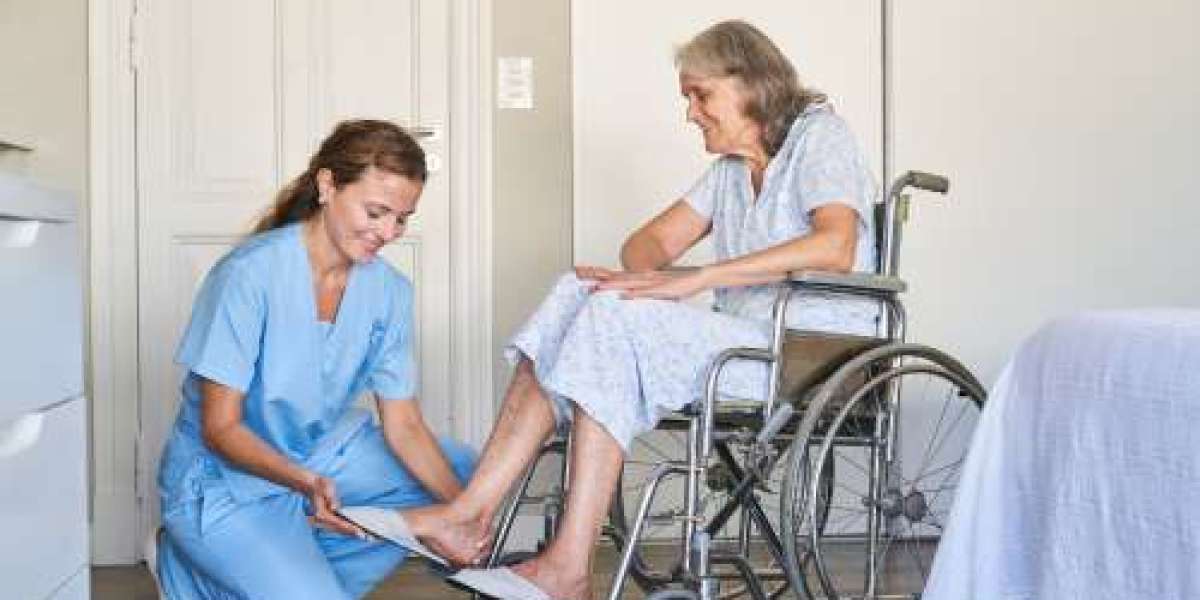Effective communication is the backbone of providing quality care in health and social services. Whether you're interacting with patients, their families, or your colleagues, the ability to communicate clearly and empathetically can directly impact patient outcomes and the quality of care provided. A Level 5 Health and Social Care course plays a critical role in helping students develop these essential communication skills. This course equips students with the knowledge and techniques to communicate effectively in a variety of care settings, ensuring better care and stronger relationships with those they serve.
Understanding the Importance of Communication in Health and Social Care
In health and social care, communication is more than just conveying information. It’s about building trust, understanding patients' needs, and providing emotional support. Miscommunication can lead to errors, misunderstanding of needs, or a breakdown in trust. Therefore, learning how to communicate effectively is crucial for ensuring:
Accurate information exchange: Clear communication helps ensure that patients’ needs, conditions, and treatment plans are fully understood by everyone involved in their care, from doctors to family members and other care professionals.
Patient comfort and reassurance: Patients often find themselves in vulnerable situations. Communicating with empathy can reassure patients, easing anxiety and helping them feel understood and cared for.
Creating a collaborative care environment: Effective communication isn’t just about speaking—it's also about listening. Listening actively to patients, family members, and colleagues promotes a collaborative approach to care, ensuring all perspectives are heard and integrated into care plans.
Key Communication Skills Developed in the Level 5 Course
The Level 5 Health and Social Care course is designed to refine communication skills and introduce students to advanced techniques used in health and social care settings. Key communication techniques developed in the course include:
Active listening: Listening is a core part of communication. Active listening involves fully concentrating on what the patient is saying, understanding their message, and responding thoughtfully. This technique ensures that care providers understand the full scope of a patient’s needs.
Non-verbal communication: Much of communication happens without words. Students learn to recognize and use body language, facial expressions, and gestures to better communicate with patients who may have difficulty expressing themselves verbally, such as those with dementia or speech impairments.
Empathetic communication: Empathy is crucial in healthcare settings. The course teaches students to communicate with genuine care, showing understanding of the patient's emotional and physical state. By being empathetic, health and social care professionals can provide a more supportive and compassionate environment.
Building rapport: Establishing trust with patients is key to providing effective care. The course helps students understand how to build rapport by being respectful, approachable, and supportive, allowing patients to feel more comfortable in sharing their concerns.
Clear and concise communication: Health and social care professionals often need to convey complex information quickly. Students learn how to explain medical terms and care plans in simple, clear language, ensuring patients understand the information they are receiving.
Cultural sensitivity: In health and social care, professionals often work with people from diverse cultural backgrounds. The course highlights the importance of cultural awareness, teaching students how to communicate respectfully and sensitively with people from different cultures, ensuring care is delivered in a manner that is both appropriate and respectful.
The Role of Communication in Improving Patient Care
Effective communication directly influences the quality of patient care. When healthcare providers communicate well, patients experience several benefits:
Improved patient outcomes: Clear communication ensures that care providers understand the full extent of a patient's condition, which leads to better diagnosis, treatment plans, and follow-up care. Informed patients are also more likely to follow treatment recommendations.
Enhanced patient satisfaction: Patients who feel heard and understood are more likely to be satisfied with their care. When health and social care professionals communicate effectively, patients feel valued, resulting in better overall experiences and trust in the care they are receiving.
Decreased risk of errors: Miscommunication is one of the leading causes of medical errors. By learning the best communication practices, students are equipped to minimize the risk of errors, ensuring that information is accurately relayed among the care team and between patients and providers.
Better support for families: Communication doesn’t just involve the patient—it also extends to their family members. In health and social care, families often play a significant role in the care process. Effective communication helps keep families informed and involved, which is crucial for holistic care.
Fostering a positive care environment: Good communication fosters positive working relationships among staff and with patients. This creates a better work environment for everyone, which can improve morale and job satisfaction. A happy, well-supported workforce is better equipped to provide excellent patient care.
Real-World Application of Communication Skills
Throughout the Level 5 Health and Social Care course, students gain hands-on experience in applying communication skills in real-world scenarios. For example, students may engage in role-playing exercises, case studies, or work placements that challenge them to use their communication techniques in various settings, such as:
Handling difficult conversations: Whether it's delivering bad news to a patient or addressing concerns with a colleague, students learn how to navigate challenging conversations with professionalism and empathy.
Interdisciplinary communication: Healthcare involves a range of professionals, including doctors, nurses, social workers, and therapists. The course teaches students how to communicate effectively within multidisciplinary teams, ensuring that everyone is on the same page when it comes to patient care.
Patient advocacy: The course helps students understand their role as advocates for patients. Being able to communicate the needs and concerns of patients to other healthcare providers or family members is a critical part of patient care.
Managing conflicts: In healthcare settings, conflicts may arise, whether between patients, families, or staff. Students are taught conflict resolution techniques to handle disagreements professionally and constructively.
Conclusion
Mastering communication in health and social care is crucial for success in the field. The Level 5 Health and Social Care course helps students develop advanced communication techniques that improve patient care, enhance satisfaction, and reduce errors. From active listening to cultural sensitivity, the course prepares students to communicate effectively with patients, families, and colleagues, ensuring that care is both compassionate and efficient. In a field where communication is key to making a real difference in people’s lives, mastering these skills is essential for anyone pursuing a career in health and social care.








